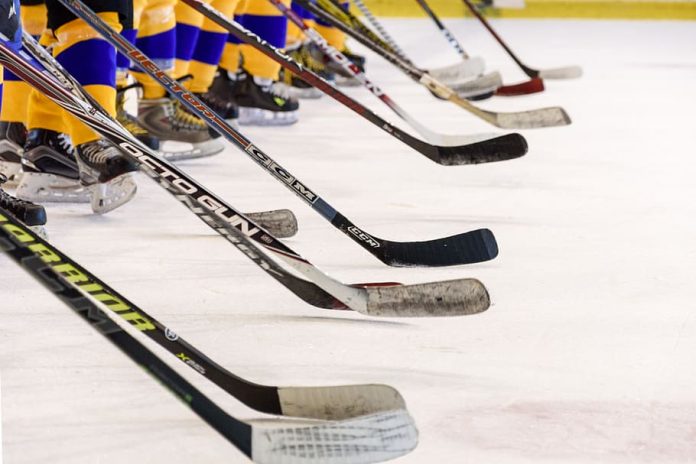
Hockey sticks come in a variety of different materials and designs for the shaft and stick at a hockey shop. The right material for a player transmits even the smallest sensation to a player’s hands. This translates into the right “feel” of the material of the stick for the player. Just like every player’s skills are unique, each player has a different feel for a particular material.
The three main materials used in making hockey sticks are aluminum, wood, and composite. Each material has its pros and cons for players. Here you can get a basic understanding of the qualities of each material.
Aluminium Hockey Sticks
Several sheets of aluminium are folded to fashion the long block that will become the hockey stick. The layered sheets of aluminium are then compressed into the shape of the final stick. An advantage of using aluminium is that, since it is made of several sheets of compressed aluminium, the final stick is much stronger. The lengthy piece of aluminium, the size of the aluminium sheet, is then cut to the size of the required stick size.
These aluminium precasts go through a furnace that heats them to extremely high temperatures. The machine then compresses all of the aluminium through an opening using the process of extrusion. The metal that extrudes from the machine is cut roughly the size of the hockey sticks. This process is repeated several times as the hole becomes slightly smaller and the temperatures get hotter each time.
The final temperature is almost 320° C to strengthen the metal and mould it into its final shape. The aluminium hockey stick can be painted by a process known as anodisation. The heel end of the stick has a rivet where the blade can be inserted and connected with hot glue. A rubber seal is inserted on the top end to form the handles.
Wooden Hockey Sticks
Hockey stick makers receive a heavy finished laminate in a basic J-shaped formation that is made up of mostly wood and possibly layers of fiberglass. The hockey stick maker passes these laminates through a saw with splayed teeth to shape it into the desired frame. The wooden laminate passes through these saws several times each cut bringing it closer to the final shape of the hockey stick. Ash is glued onto one end of the hockey stick to join the shaft and the blade.
A groove is cut right through the centre of the stick to insert a J-shaped blade on the heel of the hockey stick. The blade is glued by passing it through a hydraulic press for half an hour. The final hockey stick can be painted before being dipped into a fiberglass coating.
Composite Hockey Sticks
Composite hockey sticks are not made of any one type of material. They can be made from fiberglass, kevlar, Nomex, and some amounts of graphite. Each material has its own unique set of properties that contribute to the design and feel of the hockey stick. You can explore the characteristics of each material before purchasing any specific design.
Expert Recommendations:
Decide on any type of hockey stick and use it for at least ten days before judging it. You will find that each material has a unique set of attributes when you play with it for a longer time. Do not judge a material before you have used it. But there will certainly be some materials you cannot enjoy playing field hockey with.




